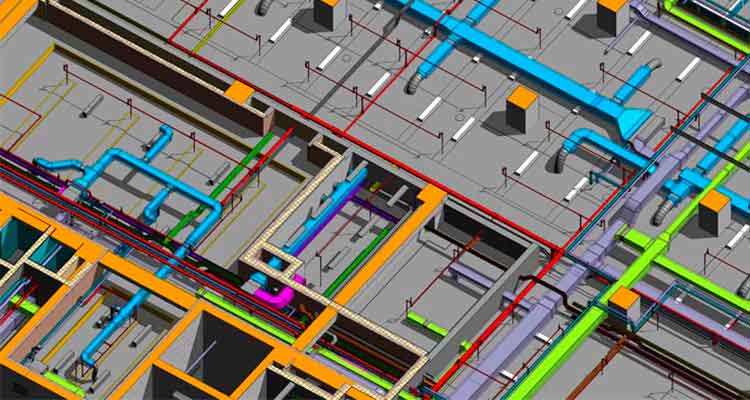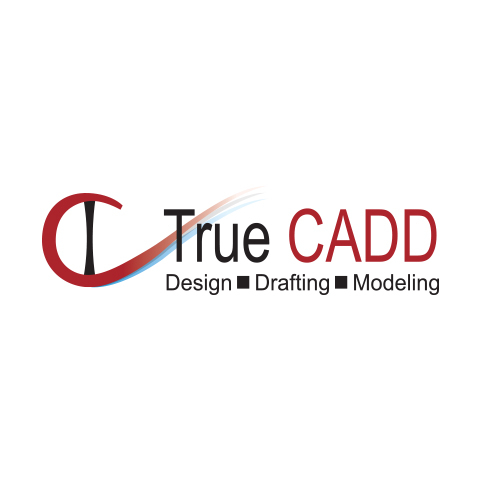How to Save 20% time and cost with Streamlined MEP BIM Workflow

How effective and efficient is your BIM workflow? Are you constantly challenged by obsolete construction processes and workflows? Spending disturbed days and nights due to project cost and time overshoots? Efficient and streamlined MEP BIM workflows can help you up to 20% in time and cost savings.
Silo workflows can be damaging for a construction project as they lead to reduced productivity and the absence of collaboration. Preliminary planning or comprehensive design through workflow streamlining using MEP coordination services helps MEP contractors derive significant benefits. Adopting BIM for building designs, helps stakeholders improve workflows and improve efficiencies with 3D model content, model creation, and auditing.
Challenges observed with obsolete workflows
- Higher numbers of errors
- lower productivity
- lack of automation
- increase in manual tasks
- diminished project management
Why streamlined MEP BIM workflows are important to save construction time and costs?
The use of content-rich BIM models integrated with existing workflows can enhance information management in the construction process. Cost and time savings can be achieved in the preconstruction phase of the project with incremental improvements in MEP BIM coordination. Enhancements in project productivity serve greater advantages for various stakeholders including contractors and MEP firms. In a scenario, where fragmented workflows turn to collaborative the accuracy, and reliability of sharing information draw greater productivity.
Projects that follow every stakeholder's feedback at the same pace, speed up the design and construction process. To leverage BIM from design to construction and management requires optimized MEP BIM workflows with a higher Level of Detail (LOD) and productivity. Integrating real-world scenarios in design creates greater detail for prefabrication and installation. When costly rework is saved, it results in savings of time and cost.
Benefits of a streamlined MEP BIM workflow
Reinforcing new or existing projects with a Revit MEP workflow draws better outcomes by exploring ideas, evaluating design options, and making informed decisions. A well-rigged MEP BIM workflow consolidates quick information distribution, centralized project management, higher collaboration through IFC, creating manufacturer-centric content, integrating prefabrication, etc.
Designing with real-world and manufacturer-centric content for MEP systems
Older workflows are time exhaustive. Often data is fragmented leading to loss of data, and MEP design specifications do not sync with construction quality.
Using a high Level of Detail (LOD) in Revit modeling is crucial as it enables various BIM teams to generate accurate and detailed model-extracted project drawings. Using real-world objects through Revit families helps enhance detailing, fabrication, and installation. Workflow streamlining with Autodesk Revit MEP workflows helps factor in material and labor costs, project submittals, part specifications, etc. With a perpetually evolving database, contractors and other teams can access updated data.
A project management solutions firm in Saudi Arabia outsourced its MEP BIM modeling needs to TrueCADD. A coordinated 3D BIM model with LOD 500 was required for University Hospital Building. The team at TrueCADD generated a clash-free and coordinated 3D model that helped the client –
- take accurate material takeoffs
- build accurate project schedules
- streamline construction activities
- save time and costs by reducing rework
Augmenting coordination with accurate, information-rich, and reliable 3D models
Working with outdated workflows created conflicts for new components to be added. Making space for MEP equipment in tight spaces leads to soft clashes. Working in a coordinated 3D environment helps MEP contractors convert engineering models into fully constructible models in Revit.
Early detection of such clashes or interferences promotes better fabrication insights to include MEP equipment whilst installation.
Taking prefabrication to the next level to reduce waste and diminish labor costs
Fabrication-ready shop drawings reduce the need to interpret field design. Prefabricating a myriad of mechanical systems, ductwork, multi-discipline racks ensures all the stakeholders are coordinated. Using prefabrication for more than 85% of plumbing and mechanical equipment leads to a reduction in labor charges and diminished material waste.
Prefabrication enables contractors and MEP firms to produce a high-quality end-products as they can be pre-assembled in an offshore factory with various processes and tools. It also helps contracting firms win greater bids through confidence in accurate and reliable information. Building a 3D model in Revit with accurate annotations and tags like dimensions, part numbers, specs, etc. drives high-quality fabrication. Information stored in QR codes keeps data documented and organized for prefabrication.
With color identification, dimensions, and other data in place, material schedules and Bill of Materials (BOMs) can be extracted. Heavy equipment fabrication and installation for ductwork, hangers, and other components can be done on the fly.
MEP clash detection services were required by a general contracting company from Muscat, Oman. With BIM models for architecture and structure, and IFC drawings provided as input, a clash-free and coordinated model was required for an airport project. A clash-free 3D MEP model at LOD 400 along with clash detection reports was created to –
- Save $7 million in six months
- Diminish field conflicts
- Promote 100% installation of MEP systems
Saving construction Costs with a Streamlined MEP BIM Workflow
Cost and time savings of 20% or more can be leveraged through prefabrication and assembly in an offshore factory. Coordination efforts by designers help achieve a greater Level of Detail (LOD) in the preconstruction phase. This helps MEP contractors stay ahead of the curve producing competitive bids.
Overall impact of results in a construction process
Enhanced prefabrication levels of MEP components by 90%
Accurate and accelerated levels of fabrication and installation
Enhanced cost and time savings of 20% with 3D visualization
Improved collaboration within MEP disciplines with 3D BIM models for better clash identification and resolution
Conclusion
Workflow streamlining helps contracting firms leverage the full value of BIM. It helps clients deliver a significant advantage with long-lasting and substantial advantages. MEP BIM coordination gives MEP firms the power to do more.
MEP BIM coordination helps contractors make smarter decisions and gain a greater focus on design by generating multiple design prototypes. By making smarter calls, fewer RFIs and partnering with the right BIM service providers, contractors become BIM-ready, marketable, and ready for future time and cost savings.












